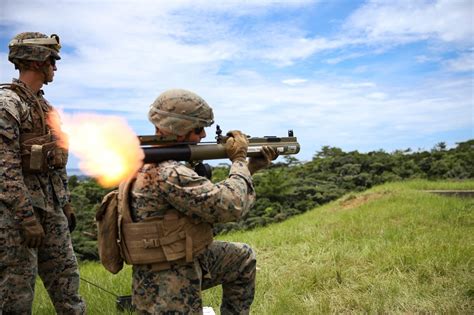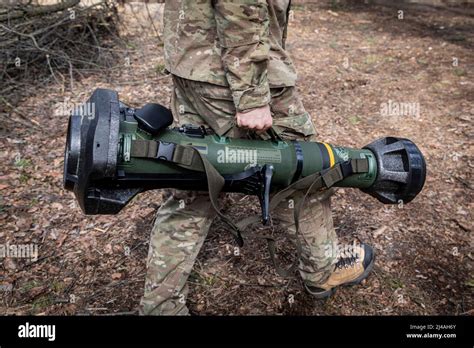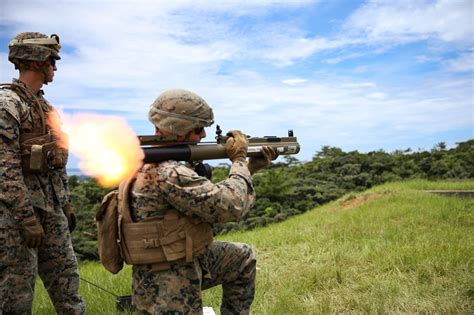The Light Anti-Tank Weapon (LAW) has been a crucial component of modern infantry units, providing a portable and effective means of engaging and defeating armored vehicles on the battlefield. With the evolution of armored technology, the development of anti-tank weapons has become increasingly sophisticated, necessitating the creation of specialized munitions capable of penetrating advanced armor types.
The concept of a lightweight, disposable anti-tank weapon dates back to World War II, where early examples such as the German Panzerfaust and American bazooka demonstrated the potential of such systems. However, these early models were often cumbersome, inaccurate, and limited in their effectiveness against heavily armored targets. The advent of more advanced materials and designs led to the development of modern LAW systems, which have become a staple of infantry forces worldwide.
Design and Functionality

Modern LAW systems typically consist of a disposable launch tube, a rocket-propelled grenade (RPG), and a firing mechanism. The launch tube is usually made of lightweight materials, such as fiberglass or aluminum, and is designed to be compact and easily transportable. The RPG itself is typically equipped with a shaped charge warhead, which is optimized for armor penetration. The firing mechanism is often simple and intuitive, allowing soldiers to quickly and accurately engage targets.
One of the key advantages of modern LAW systems is their portability and ease of use. Weighing between 5-10 kilograms (11-22 pounds), these systems can be easily carried by a single soldier, allowing for rapid deployment and engagement of targets. The LAW’s simplicity and reliability also make it an attractive option for forces operating in austere or resource-constrained environments.
Types of LAW Systems
There are several types of LAW systems currently in use, each with its own unique characteristics and advantages. Some of the most common include:- The M72 LAW (United States): A widely used and highly effective system, the M72 LAW has been in service since the 1960s and has seen extensive use in various conflicts.
- The AT4 (Sweden): A more modern design, the AT4 features a disposable launch tube and a highly effective shaped charge warhead.
- The Panzerfaust 3 (Germany): A highly advanced system, the Panzerfaust 3 features a sophisticated firing mechanism and a tandem warhead capable of defeating advanced armor types.
| System | Weight (kg) | Length (mm) | Penetration (mm) |
|---|---|---|---|
| M72 LAW | 5.9 | 910 | 300 |
| AT4 | 7.4 | 1016 | 400 |
| Panzerfaust 3 | 12.9 | 1200 | 700 |

Operational Considerations

The effective employment of LAW systems on the battlefield requires careful consideration of several operational factors. These include:
- Target identification and acquisition: The ability to quickly and accurately identify and engage targets is critical to the successful use of LAW systems.
- Firing position and concealment: The selection of a suitable firing position, taking into account factors such as cover, concealment, and fields of fire, is essential to minimizing the risk of counterattack.
- Team coordination and communication: The coordination of LAW teams with other infantry elements, such as machine gunners and sniper teams, can significantly enhance the overall effectiveness of the system.
Key Points
- The Light Anti-Tank Weapon (LAW) is a portable and effective means of engaging and defeating armored vehicles on the battlefield.
- Modern LAW systems typically consist of a disposable launch tube, a rocket-propelled grenade (RPG), and a firing mechanism.
- The LAW's portability and ease of use make it an attractive option for forces operating in austere or resource-constrained environments.
- There are several types of LAW systems currently in use, each with its own unique characteristics and advantages.
- The effective employment of LAW systems on the battlefield requires careful consideration of operational factors, including target identification and acquisition, firing position and concealment, and team coordination and communication.
Future Developments
As armor technology continues to evolve, it is likely that LAW systems will also undergo significant advancements. Some potential areas of development include:- Advanced materials and designs: The use of new materials and designs, such as composite materials and advanced propulsion systems, could significantly enhance the performance and effectiveness of LAW systems.
- Smart munitions: The development of smart munitions, capable of adjusting their trajectory and warhead configuration in real-time, could greatly improve the accuracy and lethality of LAW systems.
- Network-centric warfare: The integration of LAW systems with network-centric warfare capabilities, such as advanced sensors and communication systems, could enable more effective targeting and coordination of anti-tank efforts.
What is the primary advantage of modern LAW systems?
+The primary advantage of modern LAW systems is their portability and ease of use, making them an attractive option for forces operating in austere or resource-constrained environments.
How do LAW systems compare to other anti-tank weapons?
+LAW systems are generally more portable and easier to use than other anti-tank weapons, such as tank guns and anti-tank missiles. However, they may have limited range and penetration capabilities compared to these systems.
What are the potential future developments for LAW systems?
+Potential future developments for LAW systems include the use of advanced materials and designs, smart munitions, and network-centric warfare capabilities.
Meta Description: The Light Anti-Tank Weapon (LAW) is a portable and effective means of engaging and defeating armored vehicles on the battlefield. Learn about the design, functionality, and operational considerations of modern LAW systems, as well as potential future developments. (150 characters)



